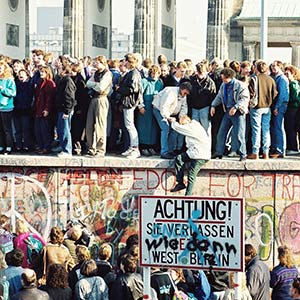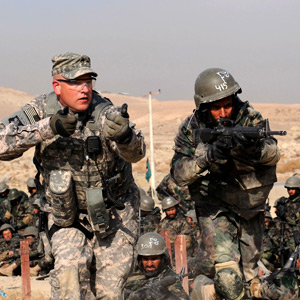What Does the N Stand for in Nato
What is NATO?
Pick a topic & discover NATO
There are currently 30 members
Sort alphabetically or Sort by date
- Albania (2009)
- Belgium (1949)
- Bulgaria (2004)
- Canada (1949)
- Croatia (2009)
- Czech Republic (1999)
- Denmark (1949)
- Estonia (2004)
- France (1949)
- Germany (1955)
- Greece (1952)
- Hungary (1999)
- Iceland (1949)
- Italy (1949)
- Latvia (2004)
- Lithuania (2004)
- Luxembourg (1949)
- Montenegro (2017)
- Netherlands (1949)
- North Macedonia (2020)
- Norway (1949)
- Poland (1999)
- Portugal (1949)
- Romania (2004)
- Slovakia (2004)
- Slovenia (2004)
- Spain (1982)
- Turkey (1952)
- The United Kingdom (1949)
- The United States (1949)
- Belgium (1949)
- Canada (1949)
- Denmark (1949)
- France (1949)
- Iceland (1949)
- Italy (1949)
- Luxembourg (1949)
- Netherlands (1949)
- Norway (1949)
- Portugal (1949)
- The United Kingdom (1949)
- The United States (1949)
- Greece (1952)
- Turkey (1952)
- Germany (1955)
- Spain (1982)
- Czech Republic (1999)
- Hungary (1999)
- Poland (1999)
- Bulgaria (2004)
- Estonia (2004)
- Latvia (2004)
- Lithuania (2004)
- Slovakia (2004)
- Slovenia (2004)
- Romania (2004)
- Albania (2009)
- Croatia (2009)
- Montenegro (2017)
- North Macedonia (2020)
NATO enlargement
NATO membership is open to "any other European state in a position to further the principles of this Treaty and to contribute to the security of the North Atlantic area."
NATO also has what it calls the Membership Action Plan. It helps aspiring members prepare for membership and meet key requirements by providing practical advice and targeted assistance.
&nsbp;
&nsbp;

< >
2.1 A political and military Alliance
Security in our daily lives is key to our well-being. NATO's purpose is to guarantee the freedom and security of its members through political and military means.
POLITICAL - NATO promotes democratic values and enables members to consult and cooperate on defence and security-related issues to solve problems, build trust and, in the long run, prevent conflict.
MILITARY - NATO is committed to the peaceful resolution of disputes. If diplomatic efforts fail, it has the military power to undertake crisis-management operations. These are carried out under the collective defence clause of NATO's founding treaty - Article 5 of the Washington Treaty or under a United Nations mandate, alone or in cooperation with other countries and international organisations.
2.2 Collective defence
NATO is committed to the principle that an attack against one or several of its members is considered as an attack against all. This is the principle of collective defence, which is enshrined in Article 5 of the Washington Treaty.
So far, Article 5 has been invoked once - in response to the 9/11 terrorist attacks in the United States in 2001.
2.3 The Transatlantic link
NATO is an alliance of countries from Europe and North America. It provides a unique link between these two continents, enabling them to consult and cooperate in the field of defence and security, and conduct multinational crisis-management operations together.
2.4 The 2010 strategic concept
Strategic Concepts lay down the Alliance's core tasks and principles, its values, the evolving security environment and the Alliance's strategic objectives for the next decade. The 2010 Strategic Concept defines NATO's cores tasks as: collective defence, crisis-management and cooperative security.
< >
3.1 Decisions and consultations
Every day, member countries consult and take decisions on security issues at all levels and in a variety of fields.
A "NATO decision" is the expression of the collective will of all 30 member countries since all decisions are taken by consensus.
Hundreds of officials, as well as civilian and military experts, come to NATO Headquarters each day to exchange information, share ideas and help prepare decisions when needed, in cooperation with national delegations and the staff at NATO Headquarters.
3.2 Operations and missions
- Kosovo
- Securing the Mediterranean
- Supporting the African Union
NATO takes an active role in a broad range of crisis-management operations and missions, including civil emergency operations.
NATO's crisis-management operations are carried out under Article 5 of the Washington Treaty or under a United Nations mandate.
3.3 Partnerships
40 non-member countries work with NATO on a wide range of political and security-related issues. These countries pursue dialogue and practical cooperation with the Alliance and many contribute to NATO-led operations and missions. NATO is also cooperating with a wide network of international organisations.
Partner countries do not have the same decision-making authority as member countries.
Learn more
about NATO's partnerships
3.4 Developing the means to respond to threats
![]()
NATO has always innovated and adapted itself to ensure its policies, capabilities and structures meet current and future threats, including the collective defence of its members.

1949
1989

Fall of the Berlin Wall
1991
NATO develops partnerships with former adversaries after the break-up of
the Soviet Union
1995
2001
Large-scale terrorist attacks in New York and Washington D.C.
NATO invokes Article 5 for the first time ever and adopts a broader approach to security
2003

2010
NATO adopts the 2010 Strategic Concept "Active Engagement, Modern Defence"
 Go to NATO Declassified
Go to NATO Declassified
Member countries
View organigram-
NATO delegations
Each member country has a permanent delegation at NATO's political headquarters in Brussels. Each delegation is headed by an "ambassador", who represents his/her government in the Alliance's consultation and decision-making process.
Close
-
The Nuclear Planning Group
The Nuclear Planning Group has the same authority as the North Atlantic Council with regard to nuclear policy issues.
Close
-
The NAC: at the heart of NATO
The North Atlantic Council (NAC) is the principal political decision-making body at NATO. Each member country has a seat at the NAC.
It meets at least once a week or whenever the need arises, at different levels. It is chaired by the Secretary General who helps members reach agreement on key issues.Close
-
Subordinate committees
NATO has a network of committees to deal with all subjects on its agenda, from political to more technical issues. They bring national representatives and experts from all NATO member countries together on a regular basis.
Close
-
NATO agencies
NATO agencies and organisations play a vital role in procuring and sustaining capabilities collectively. They specialise in technical fields that complement and form an integral part of NATO's agenda: procurement, support and communications and information.
Close
-
The Secretary General
The Secretary General is the Alliance's top international civil servant. He/she is responsible for steering the process of consultation and decision-making within the Alliance and ensuring that decisions are implemented. The Secretary General is also NATO's chief spokesperson and heads the Organisation's International Staff, which provides advice, guidance and administrative support to the national delegations at NATO NATO Headquarters.
Close
-
Military organisation and structure
When the implementation of political decisions has military implications, the key actors involved are: the Military Committee, composed of the Chiefs of Defence of NATO member countries; the International Military Staff, the Military Committee's executive body; and the military command structure, composed of Allied Command Operations and Allied Command Transformation.
NATO has very few permanent forces of its own. When the North Atlantic Council agrees to launch an operation, members contribute military forces on a voluntary basis. These forces then return to their countries once the mission is completed.
Close
What Does the N Stand for in Nato
Source: https://www.nato.int/nato-welcome/index.html
0 Response to "What Does the N Stand for in Nato"
Post a Comment